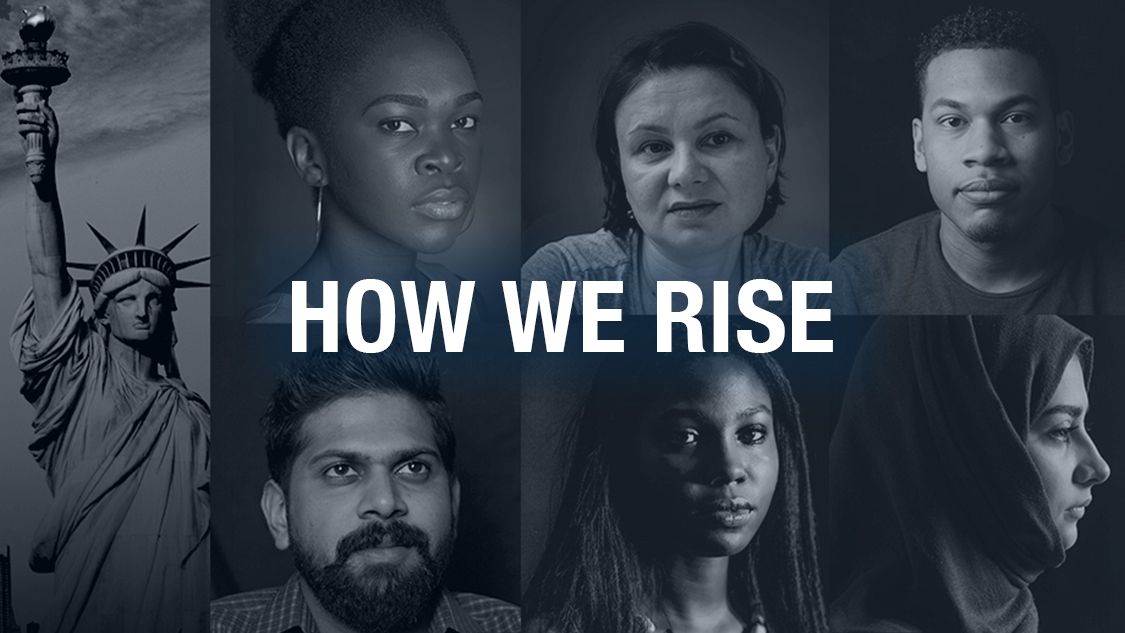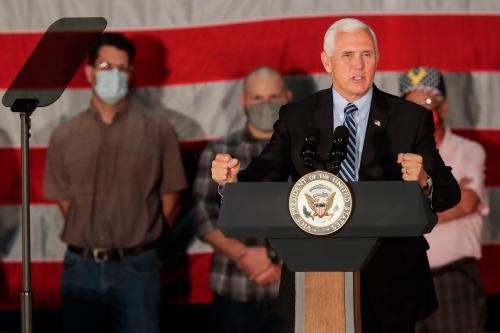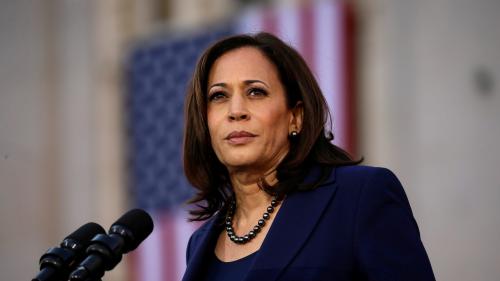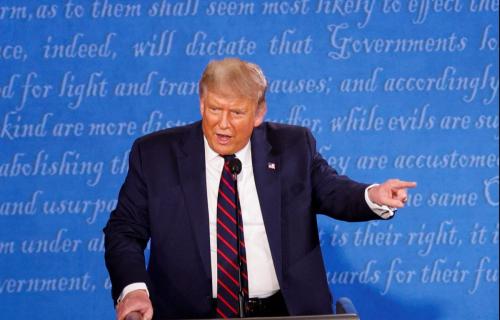With President Trump convalescing from COVID-19, and with both the President and his opponent, former Vice President Biden in their 70s, Senator Kamala Harris and Vice President Mike Pence squared off last night in what was billed as the most consequential VP debate. Given the most recent poll numbers, the Trump campaign really needed a big win here. While one could easily have been left with the impression that the debate was a draw, with each candidate roughly accomplishing what s/he sought to do, there were some very telling differences and they did not help the Trump campaign.
COVID-19
COVID-19 was the dominant theme. The debate setting, the factual nature of the questions about COVID-19 in the U.S., and Senator Harris’ opening statement painted a picture of a Trump administration unable to handle the public health crisis. Pence’s well-worn comeback that the President closed the border to incoming flights from China has not aged well as the pandemic continues to rage and has claimed over 211,000 lives. Today’s announcement that, as a result of the President’s own battle with COVID-19, the next Presidential debate will use a virtual format, only serves to highlight the administration’s poor record on combatting the virus. Trump himself needs to acknowledge the lives lost to the novel coronavirus and needs to articulate a plan to combat the disease that is consistent with the way in which COVID-19 has manifested itself in the U.S. On COVID-19, Vice President Pence was not able to shift the narrative.
The Economy
American economic life has been upended by COVID-19. As of the most recent Bureau of Labor Statistics report, the number of Americans who have permanently lost jobs stands at 3.8 million, those who are considered long-term unemployed, at 2.4 million, and those who could be considered long-term unemployed over the next two months at almost 5 million. Add to these figures the recent layoff or furlough announcements by Disney, United Airlines, American Airlines and restaurant chains around the country. The employment picture is bleak. President Trump did not help his administration’s profile on COVID-19 unemployment when he tweeted a cessation of negotiations with Congress on a fourth stimulus package. Even his walk-back hours later do not dispel the impression that the administration has lost touch with the experiences of unemployed Americans.
This is the context in which the VP debate took place. Senator Harris sought, with success, to speak directly to the millions of Americans who do not have enough money to pay basic bills or buy food and for whom a job is now a distant memory. Pence, in a tough spot here, simply did not acknowledge the economic pain of wage-earning Americans. Instead, he tried to argue that a Biden administration would increase taxes, but that was countered well by Harris. On the economy, which is not a topic so much as an experience, Harris connected on the experience and the insecurity of millions of Americans, highlighting an area where the administration’s COVID era record has been exceedingly devastating. The administration needs to act with urgency on the economy and that urgency was not articulated in the debate or prior to it.
The Optics
Optically, the contrasts could not have been sharper. Senator Harris and Vice President Pence were visually very representative of their respective political parties. Pence, an older white male, conservative and using dated language, for example, “minorities,” sounded like the Republican party of yesteryear, and looked like the Republican party of today –old, white, male, and staid. The fly that landed on Vice President Pence’s hair, did not help dispel this image.
Harris exemplified the Democratic party – ethnically diverse, youthful, more gender balanced, and, importantly, willing to take on older white males on topics of systemic racism, law and order, and climate change. If anything, Harris’ presence generated a picture of engagement on topics and experiences that resonate with many young voters.
So while the debate did not have a lot of fireworks, and likely, many viewers were relieved that it did not, the overall impression that it left for viewers who are not in the D.C. area, is that there are real contrasts between the Trump/Pence and Biden/Harris tickets in the approaches to COVID-19, to the economy and to the changing demographics of the country. And those contrasts did not reflect well on a Trump campaign that is increasingly looking like it will need a miracle to turn the tide of public opinion.
The Brookings Institution is committed to quality, independence, and impact.
We are supported by a diverse array of funders. In line with our values and policies, each Brookings publication represents the sole views of its author(s).








Commentary
Did the vice presidential debate matter? It did, and it wasn’t good for Trump.
October 8, 2020